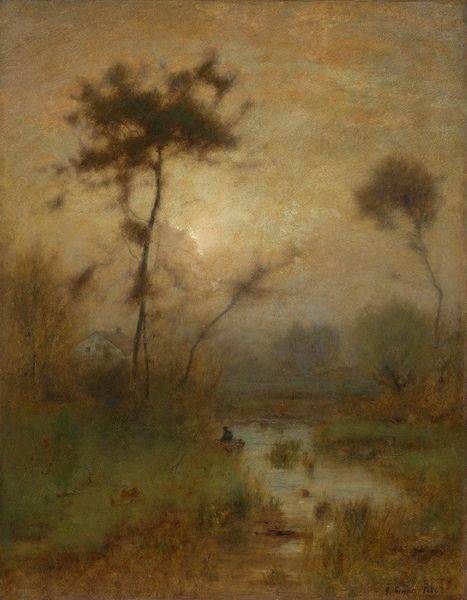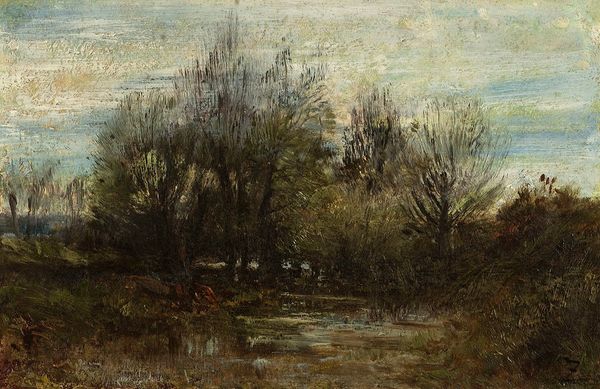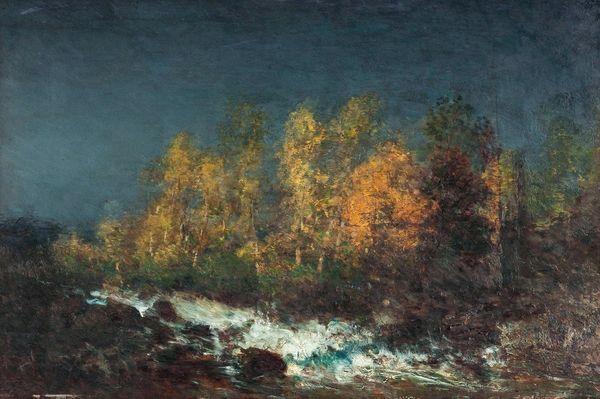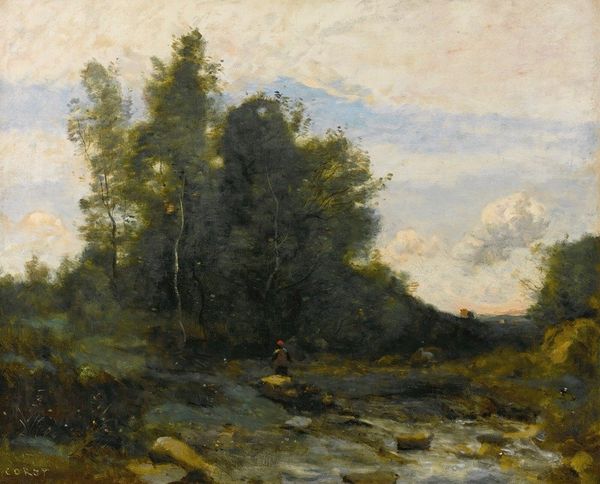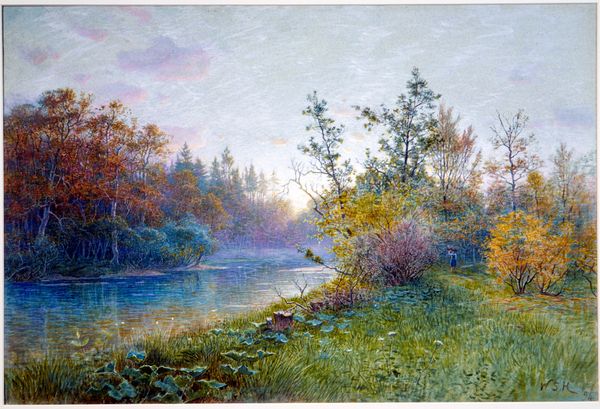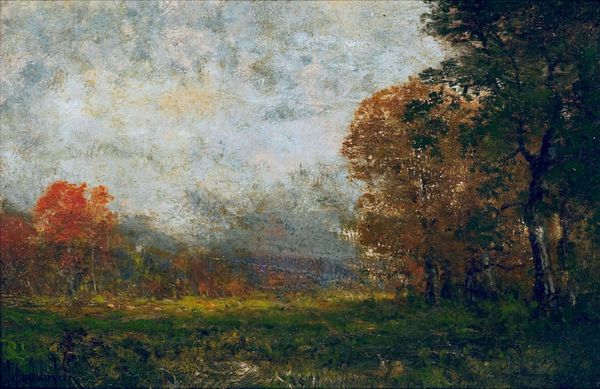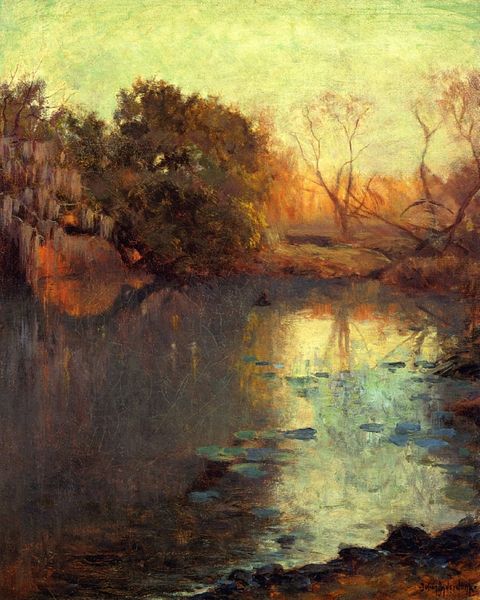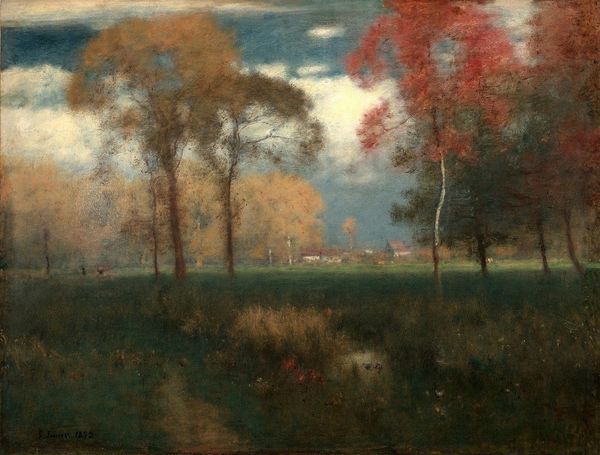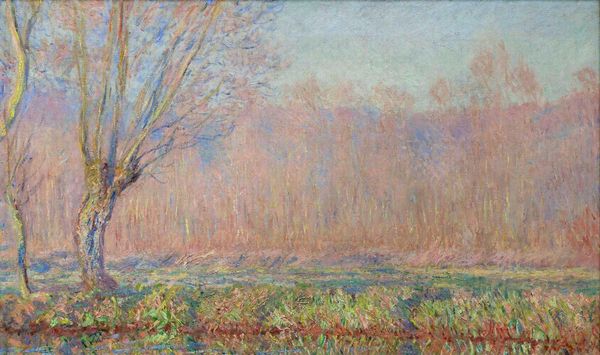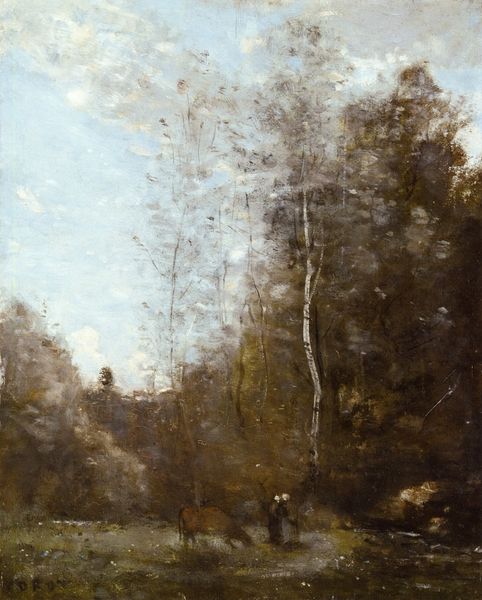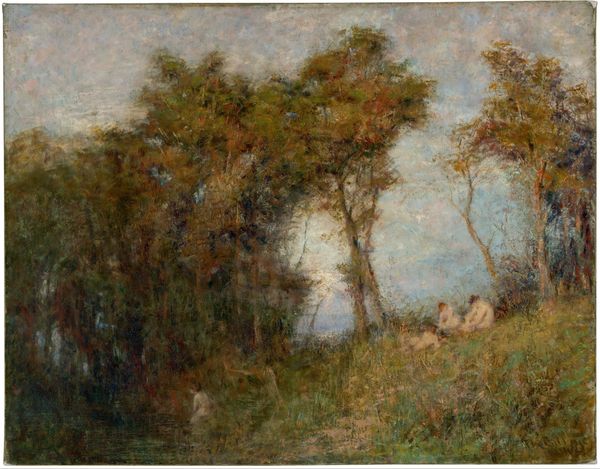
painting, plein-air, oil-paint
#
tree
#
impressionistic
#
sky
#
abstract painting
#
painting
#
atmospheric-phenomenon
#
impressionism
#
impressionist painting style
#
plein-air
#
oil-paint
#
landscape
#
waterfall
#
river
#
impressionist landscape
#
forest
#
romanticism
#
natural-landscape
#
men
#
water
#
naturalism
#
watercolor
Copyright: Public domain
Curator: We're looking at "October Landscape" by Robert Julian Onderdonk. It's an oil on canvas, capturing a very specific time of year in a very evocative way. Editor: My immediate feeling is melancholy. The muted browns and grays, the bare trees...it feels like a landscape in transition, holding its breath before winter. Curator: Onderdonk's landscapes are often read through a socio-political lens. Think about the romanticized vision of the land, specifically the Texas landscape in his case. It was intertwined with notions of progress, development, and even the displacement of Indigenous populations. Editor: Absolutely. You see that interplay of Romanticism and Naturalism. It isn't just a pretty picture; it's an assertion of ownership and the evolving role of the frontier myth, isn't it? Even though this is perhaps not identifiably "Texas." Curator: Precisely! His style aligns with plein-air painting. You're seeing an attempt to capture an immediate and authentic experience of the natural world. I wonder about the accessibility of these scenes to the general population; the relationship between his patrons and those who labored on these lands. Editor: What strikes me about this work is its universal sense of longing and impending loss. The artist could be using the visual vocabulary of grief by reminding the viewer that all things beautiful, even an autumn landscape, are also finite. It also fits perfectly within a larger discussion about the relationship between climate change, the perception of loss, and the intersectional impact it has on diverse populations and historically excluded groups. Curator: Indeed. And consider how the artist's use of loose brushstrokes enhances this mood. He seems less interested in detailed accuracy and more in capturing the fleeting essence of a scene. It becomes about feeling rather than simply seeing. The atmosphere itself becomes a character. Editor: Which makes us reflect on what we’re left with when we remove context from any experience, natural, lived, and artistic. It's more than an idyllic memory – the work challenges us to recognize that nothing stands separate from everything else, which brings even more intensity to that feeling of impending loss that pervades this landscape.
Comments
No comments
Be the first to comment and join the conversation on the ultimate creative platform.

